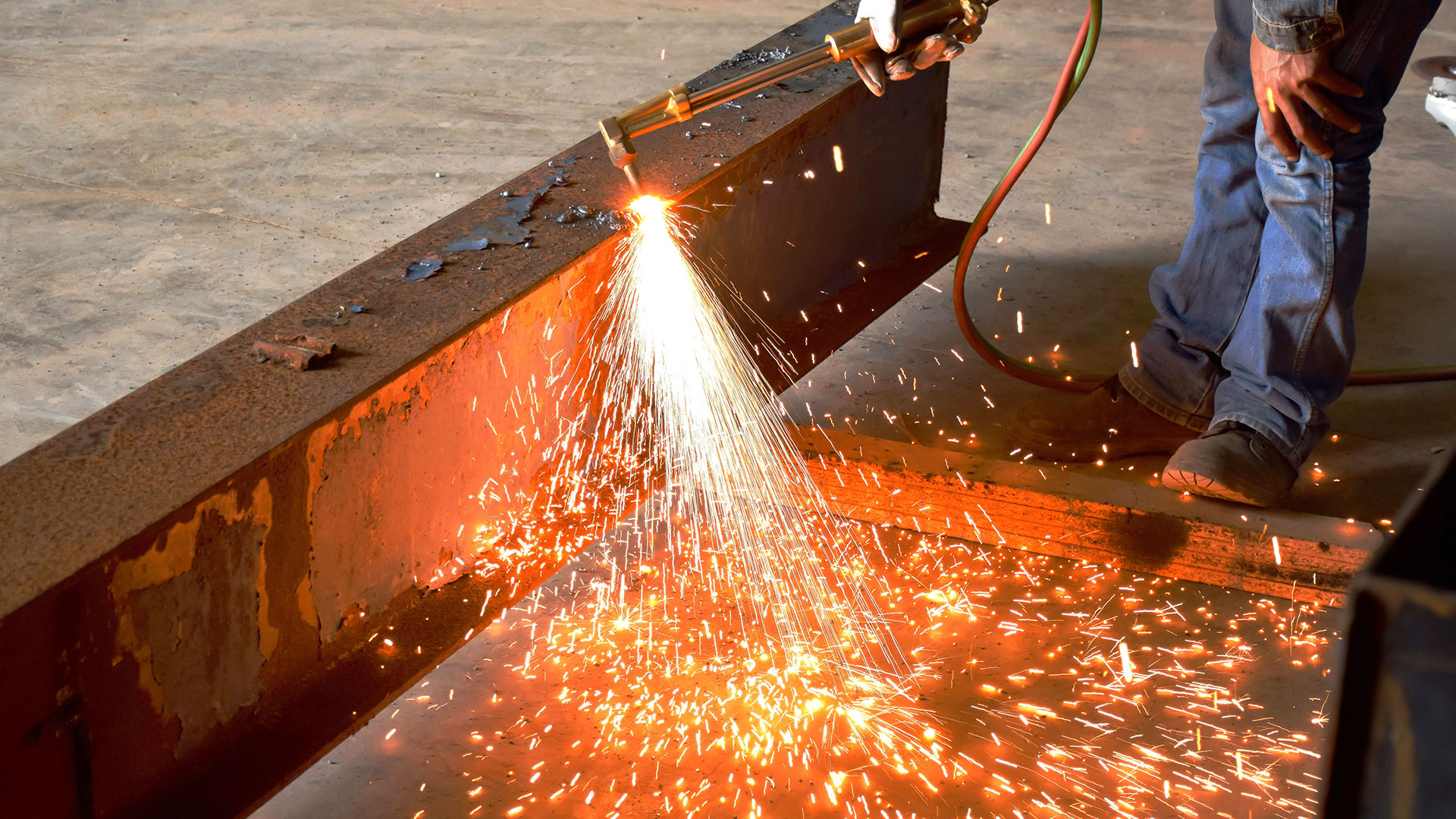Constructing a Cleaner Future: Air Quality and the Structural Steel Industry

When welding, cutting, or grinding happen in the great outdoors—as is generally the case when constructing bridges and buildings—fumes and dust don't have a chance to build up to unsafe levels (though they still add to air pollution). Workers directly exposed to weld fumes or grinding dust can be equipped with personal protective equipment (PPE), and the wind takes care of the rest.
In an indoor environment, however, it's another story. Weld fumes or dust from cutting and grinding structural steel beams can quickly accumulate to levels that exceed permissible exposure limits (PELs).
Air Quality Problems in Structural Steel Fabrication
Dust and fumes from structural steel fabrication can cause numerous problems when they are allowed to accumulate.
- Health and safety: Dust and fumes created when welding, cutting or grinding structural steel beams are highly toxic when inhaled by workers. The toxicity will depend on the exact composition of the particulate as well as particulate size. Welding and other thermal processes create tiny, invisible particulates that are inhaled deeply into the lungs, where they can make their way into other body systems. Alloys used for structural steel often contain high levels of manganese, which can cause manganism or other nervous system disorders that can mimic Parkinson's Disease or Multiple Sclerosis (MS). Workers may also be exposed to hexavalent chromium, nickel, beryllium, or other toxic substances. Exposure to these elements is linked to metal fume fever, lung cancer, kidney disease, and other health problems. Larger dusts from cutting and grinding tend not to be inhaled as deeply, but can still cause significant lung irritation and raise the risk of lung cancer, chronic pulmonary obstructive disease (COPD), and other lung disorders. Corrosion-resistant paints and other high-performance coatings can make working with structural steel even more dangerous; these coatings often contain zinc, cadmium or other toxic elements.
- Combustion risk: Metal dusts created by cutting or grinding structural steel are highly combustible. If dust is allowed to build up in enclosed areas, an explosion can occur. High-speed cutting, such as laser cutting and plasma cutting, can be especially dangerous if dust is not controlled because of the high volume of dust produced.
- Equipment damage and product quality: Uncontrolled dust from cutting, grinding and drilling structural steel can damage delicate components of laser cutters and other equipment. It can also get into paints and coatings, damaging finishes for coated steel components.
- Recruiting and retention: The structural steel industry is facing a shortage of welders and other skilled workers. Especially for the younger generation, indoor air quality and other environmental factors are playing an increasingly large role in employment decisions. Attracting new workers to the industry, and retaining the best skilled workers, will require employers to maintain a clean and comfortable working environment.
What Structural Steel Fabricators Should Do Now
Fabrication shops working with structural steel must maintain a safe and healthy working environment and comply with OSHA PELs for toxic elements found in weld fumes and steel dust. There are several steps fabrication shops should be taking now to ensure that they are compliant.
- Make sure you know which OSHA regulations apply to you. Most fabrication shops working with structural steel in an indoor environment will be covered under the General Industry requirements. Other employers working with structural steel may fall under the Construction or Shipbuilding regulations. You can find PELs for your industry on the OSHA website.
- Get an evaluation of your current indoor air quality. Air quality can be measured by placing particulate monitors at various places in the building. Wearable monitors should be used to measure exposure levels for welders and other employees directly exposed to sources of toxic dust or fumes.
- Understand the composition of your particulate. Different structural steel alloys have different chemical makeups. You also need to consider any coatings that are on the steel components during welding, cutting, drilling or grinding. If you are not sure of the composition of your dust, it can be sent to a chemical lab for analysis.
- Develop an air quality mitigation strategy. For processes that can be easily enclosed or contained to a single area, source capture is the most efficient way to control weld fumes and dust from laser or plasma cutting. Many structural steel fabricators are working with parts that are too big to be kept under a hood, however. The use of overhead cranes can also limit source capture options. Ambient air filtration offers significant advantages over simple exhaust ventilation systems, and are an excellent choice for many fabricators working with large stainless steel components.
Structural steel fabricators should work with a qualified air quality system designer to determine the most efficient and effective way to control dust and fumes from their processes. RoboVent's air quality engineers can help you evaluate your processes and facility, set appropriate air quality goals, and design an air quality solution that meets your needs.
Contact Us With Your Questions!
SUBSCRIBE TO
BLOG UPDATES









